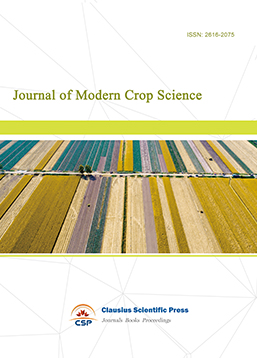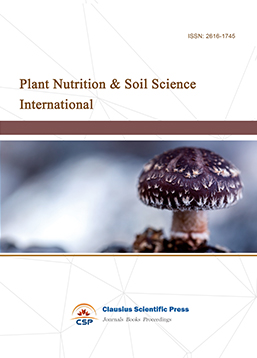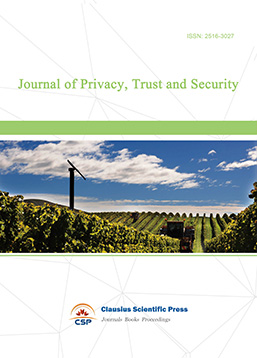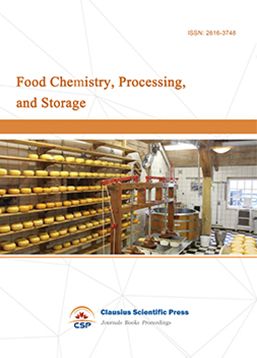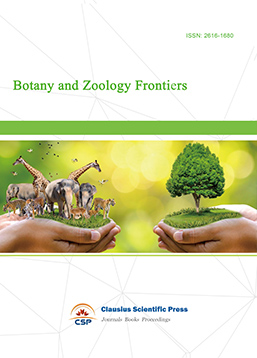ASSESSMENT OF HEAVY METALS IN FISHES (Ictalurus Punctatus) FROM RIVER NUN WITHIN TOMBIA AND POLAKU AXIS, BAYELSA STATE
DOI: 10.23977/afshn.2018.21001 | Downloads: 72 | Views: 7140
Author(s)
Orodu V. E 1, Onwukwe Ikechukwu Godfirst 2
Affiliation(s)
1 Department of Chemical Sciences, Niger Delta University, Wilberforce Island, P.M.B 017, Yenegoa, Nigeria
2 Department of Chemical Science, Niger Delta University, Wilberforce Island P.M>B 017, Yenegoa, Nigeria
Corresponding Author
Orodu V. EABSTRACT
The concentration of the following heavy metals (Fe, Pb, Cd, Cu, & Cr) in fishes (IctalurusPunctatus) from River Nun within the Tombia and Polaku axis located in Bayelsa State Nigeria was studied. The gills, Kidney, liver, bones and flesh of the fishes after oven drying for 72 hours was ground together into powder. One gram of the ground sample was weighed and digested using aqua regia in the ratio of 3:1 (HNO3 and H2SO4). The sample was then filtered and run in an AAS. The following result was observed and presented in mean ± SEM. For Tombia Fish; Fe recorded a concentration of 1.910± 0.001mg/kg, lead recorded 0.707 ± 0.001mg/kg, Chromium = 0.451 ± 0.001mg/kg, Copper = 0.246 ± 0.001mg/kg, and Cadmium = 0.070 ± 0.001mg/kg. While for Polaku Fish, Fe = 0.128 ± 0.001mg/kg, Pb = 0.004 ± 0.001mg/kg, Cu = 0.002 ± 0.001mg/kg, Cr and Cd were below detection limit. According to the maximum permissible limits stipulated by World Health Organization (WHO), the two fishes from River Nun within the axis of Polaku and Tombia Community are within the range and fit for consumption by humans. But in comparing the two fishes within these two communities (Tombia and Polaku), there is an increase in lead and cadmium (Pb and Cd) for Tombia compared to Polaku which might be as a result of the domestic activities carried out at the bank of Tombia river.
KEYWORDS
IctalurusPunctatus; Heavy Metals; WHOCITE THIS PAPER
Orodu V. E, Onwukwe I. G., ASSESSMENT OF HEAVY METALS IN FISHES (Ictalurus Punctatus) FROM RIVER NUN WITHIN TOMBIA AND POLAKU AXIS, BAYELSA STATE. Advances in Food Science and Human Nutrition (2018) 2: 1-10.
REFERENCES
[1] Akoto O, BismarkEshun F, Darko G. and Adei E. (2014): Concentrations and Health Risk Assessments of Heavy Metals in Fish from the Fosu Lagoon; Int. J.Environ. Res. 8(2):403-410
[2] Atuanya E., Nwogu N., and Akor E., (2012): Effluent qualities of government and private abattoirs and theireffects on Ikpoba River, Benin City, Edo State, Nigeria. Advances in Biological Research.6 (5):196- 201
[3] Edet O.A., Udoudo M.E., Ekam I.A., and Ngozi O.A (2014): Levels of Heavy Metals in Fish Obtained from two fishing sites in AkwaIbom State, Nigeria; African Journal of Environmental Science and Technology.8(7): 416-421
[4] Edward J. B, Idowu E. O, Oso J. A, Ibidapo O. R (2013): Determination of Heavy Metal Concentration in Fish Samples, Sediment and Water from Odo-Ayo River in Ado-Ekiti,Ekiti-State, Nigeria, International Journal of Environmental Monitoring and Analysis. 1: 27-33.
[5] FAO, (1983): Compilation of legal limits for hazardoussubstances in fish and fishery products. Food and Agriculture Organization, FAO Fish Circ. 464:5-100
[6] FAO/ WHO (1984): List of maximum levels recommended for contaminants bythe joint FAO/WHO Codex Alimentarius Commission.3:1-8
[7] Farkas A., Salanki J.,and Specziar A., (2003): Age- and Size- Specific Patterns of Heavy Metals in the Organsof Freshwater Fish AbramisbramaL. Populating a Low- Contaminated Site,”Water Research, 37(5):959–964
[8] Ghana A.K, Anim E.K, Ahialey G.O, Duodu M. Ackah and N.O. Bentil, (2011): Accumulation Profile of Heavy Metals in Fish Samples from Nsawam,Densu River, Chemistry Department, National Nuclear Research Institute. 1-5
[9] Goodwin T. H, Young A, Holmes M., Old G., Hewitt N., Leeks G., Packman, J. and Smith, B. (2003): “The Temporal and Spatial Variability of Sediment Transport and Yields within the Bradford Beck Catchment, West Yorkshire,” Science of the Total Environment.314: 475-494.
[10] Ismaniza Ismail, Idaliza Mat Saleh 2014: Analysis of Heavy Metals in Water and Fish (tilapia sp.) samples from Tasikmutiara, puchong; The MalaysianJournal of Analytical Sciences.16(3): 346 – 352
[11] Labonne, M., Basin, S., Othman, D. and Luck, J. (2001): “Lead Isotopes in Muscelsas Tracers of Metal Sources and Water Movements in a Lagoon (Thau Basin, S. France),”Chemical Geology. 181(1): 181-191
[12] Mohammad Malakootian, MohammadSeddiqMortazavi, AbdolkarimAhmadi (2016): Heavy Metals Bioaccumulation in fish of southern Iran and risk assessment of fish consumption; Environmental Health Engineering and Management Journal. 3(2):61–68
[13] Mozaffarian, D. & Eric B. (2006): Fish intake, contaminants and human health: Evaluating the Risks and the Benefits; Journal of American Medical Association; 296: 1885-1900
[14] Nkpaa, K. W., Wegwu, M. O. and Essien E. B. (2013): Heavy metals concentrations in four selected seafoodfrom crude oil polluted waters of Ogoniland, Rivers State, Nigeria;Archives of Applied ScienceResearch. 5(4): 97-104
[15] Osman, A., Wuertz, S., Mekkawy, I., Exner, H., and Kirschbaum, F. (2007): “Lead Induced Malformations in Embryos of the African Catfish Clarias Gariepinus (Burchell, 1822),” Environmental Toxicology. 22: 375-389
[16] S. Celine Hilda Mary, S. Sundaravadivel, R. Ramabai and A. Lawrence (2017), Assessment of Heavy Metals in Coastal Water and Fish Samples from Kalapet Area, Pondicherry;International Journal of Pharmaceutical Sciences and Research. 8(2): 756-762
[17] Strömgren, T. (1998): The effect of lead, cadmium, andmercury on the increase in length of five intertidal fucales: J. Exp. Marine Bio. Ecol.43 (2):107-119
[18] Olusola JO, Festus AA. (2015): Assessment of Heavy Metals in some Marine Fish Species relevant to their concentration in Water and Sediment from Coastal Watersof Ondo State, Nigeria; v5(2): Journal of Marine Science Research &Development; 1-6
[19] Taiwo I.O, F.I Adeosun, B.T. Adeniyi and N.A Bamidele(2016): Assessment of Heavy Metals in the Muscles and Bones of Fish and Shellfish from EpeLagoon, Nigeria; Advances in Biological Research. 10(4): 1-7, 257-263.
[20] WHO (2000): Hazardous Chemicals in human and environmental health, Geneva.564
[21] YelizYıldırım, U. TanselŞireli, MuammerGöncüoğlu, Ali Gücükoğlu, ÖmerÇakmak 2006; Assessment of Heavy Metals (Cadmium and Lead) in Vacuum Packaged Smoked Fish Species(Mackerel,Salmosalarand Oncorhynhusmykiss) Marketed in Ankara (Turkey);E.U. Journal of Fisheries & Aquatic Sciences;23: 353–356
| Downloads: | 2590 |
|---|---|
| Visits: | 90182 |

 Download as PDF
Download as PDF